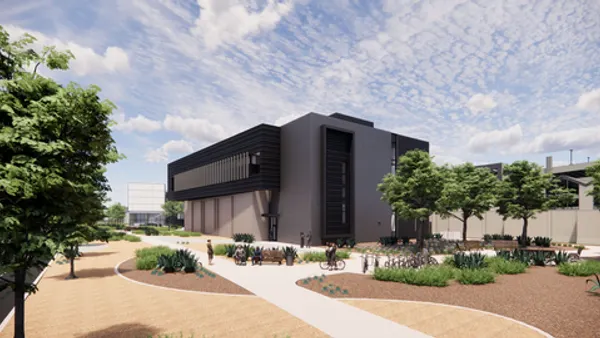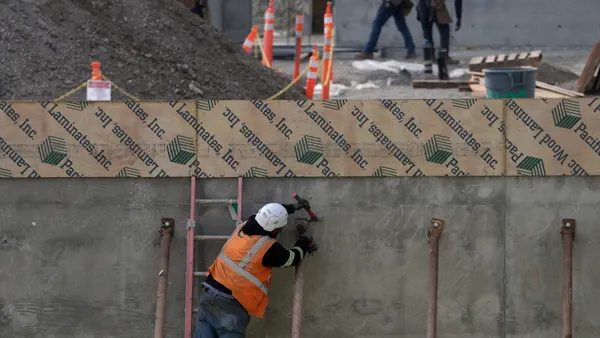Joaquin Diaz is the director of environmental health and safety for Skanska USA Building. Opinions are the author’s own.
The mental health of construction workers is increasingly a concern for construction companies across the U.S., as depression, suicide and overdose rates are high among male construction workers.
Employees who struggle with psychological distress impact worker and jobsite safety, as they are three times more likely to be injured or cause injury to others.

To support employees struggling with mental health issues and to ensure the safety of all workers, our Skanska project teams are prioritizing the way we address mental health by turning our focus to a "Total Worker Health” approach.
We need to get comfortable with talking about the uncomfortable.
To truly address mental health, though, we need to better understand the issue.
Mental health among construction workers
The Centers for Disease Control and Prevention has found that men working in construction have one of the highest suicide rates by population. Their rate of suicide is about four times higher than the general population and is the second-highest rate of all workplace industries at 45 per 100,000.
The National Health Surveys in 2019 and 2020 reported the percentage of construction workers “feeling more anxious/depressed” increased 42% in just one year. And in late 2021, the CDC’s National Institute for Occupational Safety and Health also declared construction workers have high rates of death from overdoses compared to workers in other occupations.
Mental health issue factors
The statistics on mental health among construction workers are alarming. While research on the causes of mental health issues is ongoing, I have observed several factors that potentially impact the mental health of our workers.
In a traditionally male-dominated industry, seeking help or support for mental health conditions is often stigmatized and considered taboo. Fear of consequences, shame and judgment is real in many homes and cultures.
On the job, use of heavy, complex equipment and technology contributes to higher stress and deadline-driven work, sometimes accompanied by limited job control. Seasonal, cyclical, uneven and longer work hours may contribute to family and financial concerns and fatigue.
And construction workers put their bodies on the line; chronic pain or injury may impact a worker’s ability to manage tasks, which creates performance pressure and, often, burnout.
Understanding mental health as a safety issue
We understand, especially in this post-COVID-19 world, how workplace safety is more than taking certain precautions such as placing duct tape over electrical cords or clearing nails. Modern day environmental health and safety accounts for public health as well as personal and mental health.
To prioritize mental health, we are changing our thinking and practice to implement the total worker health approach.
Total worker health is an emerging viewpoint that includes assessment, preparation and prevention of the physical and psychological impacts workers experience. The approach considers three important factors:
- Employers, workers, and the community are stakeholders in supporting and creating jobs and safeguarding employee well-being.
- The overall health status of each worker can affect work and non-work exposure to injury.
- Managers and environmental health and safety staff play pivotal roles in improving total worker health and program development.
Understanding mental health from this perspective allows construction leaders and teams to better support workers struggling psychologically.
How construction companies can support mental health
Our approach to total worker health is encompassed in our collective Care for Life directive, a key pillar in our organization’s mission. To better address total worker health, we started candid conversations to inform a step-by-step process. We began by engaging teams and peers.
To support workers’ mental health and then total health, companies can:
- Increase recognition of the problem at the individual, team, and organizational levels.
- Ensure and increase employee benefit offerings, including those for childcare, mental health services and personal time off.
- Avoid immediate penalties for changes in employee performance and, instead, engage in conversations with employees to better understand the cause of underperformance, tardiness, and absenteeism.
- Create and encourage mental health conversations on project sites, especially peer to peer interface.
- Offer mental health trainings for frontline workers, supervisors and managers.
- Evaluate work schedules to create more flexible work hours.
- Host ‘all hands’ meetings to highlight resources, share stories and foster genuine conversations about mental health.
- Increase opportunities for remote work and virtual meetings.
- Increase automation to improve efficiency that results in better work outcomes.
We cannot underestimate the way mental health issues can have ripple effects on the workplace and the safety of other individuals. But we can safeguard our workers’ well-being and support them more than ever with a more holistic approach. As construction companies increasingly view mental health as essential to workplace safety, they will be better equipped to implement efforts that support employee well-being and ensure the safety of all workers.











